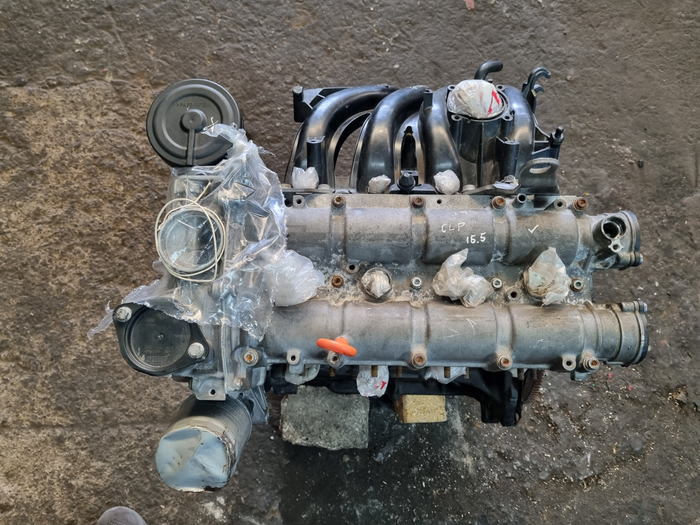Eliminate operational issues with a well-tuned clp engine.
Eliminate operational issues with a well-tuned clp engine.
Blog Article
How a Clp Engine Can Enhance Effectiveness in Various Industries
The introduction of CLP engines marks a significant shift in functional effectiveness throughout various sectors, driven by their capability to optimize fuel consumption and minimize downtime. As companies increasingly prioritize sustainability along with effectiveness, the role of CLP engines becomes even a lot more essential.
Review of CLP Engines
CLP engines, or Continuous Fluid Propellant engines, represent a substantial advancement in propulsion innovation, specifically for space applications. These engines make use of a continual feed system that permits the continual expulsion of propellant, leading to boosted effectiveness and efficiency compared to standard solid or hybrid propulsion systems. By keeping a constant circulation of liquid propellant, CLP engines can accomplish much more specific thrust control, which is important for steering spacecraft in different objective situations.
The layout of CLP engines incorporates sophisticated products and cutting-edge fuel administration systems. clp engine. This leads to reduced weight and raised reliability, vital variables for long-duration space objectives. The constant operation reduces the danger of burning instability, an usual difficulty in conventional rocket engines.

Advantages in Manufacturing
The manufacturing of Constant Fluid Propellant (CLP) engines offers several remarkable advantages that boost both effectiveness and cost-effectiveness. One of the main benefits is the structured manufacturing process, which reduces the intricacy related to typical propulsion systems. By using liquid propellant, suppliers can achieve greater accuracy in engine performance, bring about maximized power outcome and decreased waste.
Additionally, CLP engines help with a higher level of modularity, enabling simpler assimilation into various production lines. This versatility can significantly lower lead times and improve overall operational adaptability. Making use of CLP innovation likewise often tends to reduce the requirement for substantial maintenance because of fewer relocating parts, which translates into lowered downtime and operational prices.

Applications in Logistics
Leveraging Continual Fluid Propellant (CLP) engines in logistics offers substantial advantages in functional efficiency and dependability. These engines provide a durable option for numerous transportation needs, allowing the smooth movement of products throughout large ranges. The intrinsic style of CLP engines permits consistent power outcome, which converts into smoother and a lot more predictable transport routines.
One of the vital applications of CLP engines in logistics remains in heavy-duty products transport, where they can drive both ground and aerial vehicles. Their capacity to preserve high performance under varying load conditions makes sure that delivery timelines are fulfilled, thereby enhancing client fulfillment. In addition, CLP click to find out more engines can be incorporated into automated logistics systems, facilitating real-time monitoring and enhancing route planning.
Moreover, the toughness of CLP engines find this lowers maintenance downtime, permitting logistics firms to maximize their functional abilities. This is especially advantageous in warehousing operations, where efficiency in managing and delivering goods is vital. As logistics continues to progress, the integration of CLP engines represents a forward-thinking approach that not just boosts performance yet additionally supports the market's growing needs for dependability and speed.
Influence On Power Efficiency
Exactly How do Continuous Fluid Propellant (CLP) engines enhance power efficiency in transport? CLP engines utilize a constant circulation of liquid gas, enhancing combustion processes and keeping a stable thrust result. This layout lessens energy losses connected with standard combustion engines, where gas delivery can differ and result in ineffectiveness.
The continual operation of CLP engines enables for an extra efficient thermal cycle, leading to higher certain impulse compared to conventional engines. clp engine. This translates to lowered gas usage for the exact same quantity of job done, significantly decreasing operational expenses across numerous transportation fields, consisting of air travel and maritime industries
In addition, the ability of CLP engines to maintain optimal performance under varying load problems minimizes the need for constant velocity and slowdown, even more improving fuel effectiveness. Boosted power effectiveness not only adds to cost savings but likewise leads to decrease greenhouse gas exhausts, lining up with worldwide sustainability objectives.
Future Trends and Innovations
Emerging developments in Constant Fluid Propellant (CLP) engine technology assurance to reinvent the landscape of transportation performance and sustainability. As industries pivot toward greener alternatives, CLP engines stand at the leading edge, incorporating innovative products and style methods that improve efficiency while lessening environmental influence.
Among one of the most encouraging fads is the fostering of hybrid systems that integrate CLP engines with renewable resource resources. This harmony can enhance fuel usage and minimize exhausts, aligning with international sustainability objectives. Innovations in computational fluid dynamics (CFD) are promoting the design of more aerodynamically reliable engines, leading to reduced drag and improved fuel effectiveness.
Moreover, the advancement of smart tracking systems is readied to enhance functional effectiveness. These systems check out this site leverage information analytics and IoT modern technology to enhance engine performance in real-time, guaranteeing that the engines operate within their most reliable parameters.
As research remains to check out alternate propellant formulas-- such as biofuels and synthetic gas-- the future of CLP engines looks promising. By utilizing these innovations, industries can not only enhance their effectiveness however also contribute considerably to a cleaner, more sustainable future in transportation.
Conclusion
In conclusion, CLP engines represent a considerable development in performance across numerous industries. The integration of innovative materials and fewer moving parts decreases upkeep demands, while placement with sustainability objectives settings CLP engines as a critical modern technology for the future.
Report this page